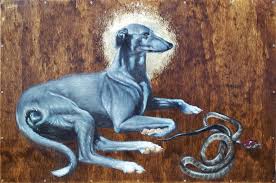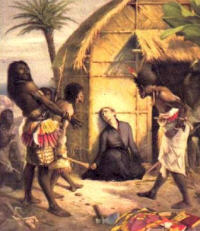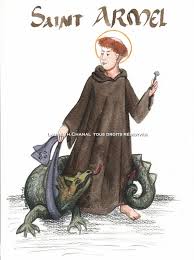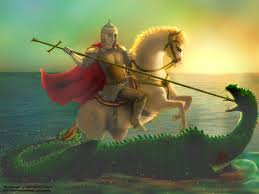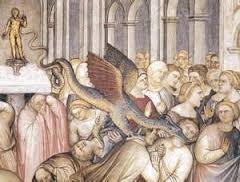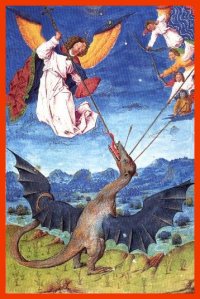St. Guinefort Feast Day August 22
He was French greyhound, traveling companion and sometime nurse to St. Roch (1295-1327). Roch, infected by the plague and with a hideous sore on his leg, went into the forest to die. But there, St. Guinefort visited him daily, licking his wound, bringing him bread snatched from his master’s table and just keeping him alive. The loyal pooch accompanied Roch on his journey back home staying with the saint until his passing. Guinefort, still attractive and noble-looking, was adopted by a rich family who entrusted him with guarding their infant. He took this job seriously, once even chewing a lurking serpent to pieces, an attack that left a lot of blood. When the baby’s father saw the gore, he assumed Guinfort had slaughtered the baby and promptly killed the holy dog with his sword. A few minutes later, the father heard his healthy baby gurgling and cooing, saw serpent bits around the cradle and realized his horrifying blunder. He build an elaborate grave for St. Guinfort where peasants, making offerings of salt, would bring the children to be healed.
